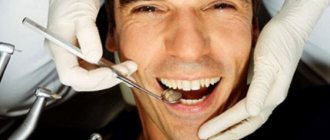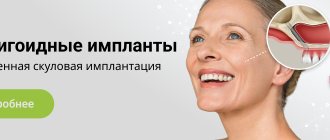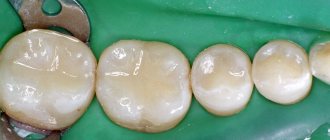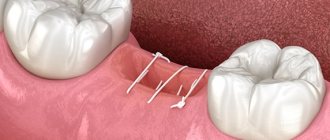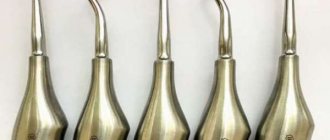If you have a sore throat, a stuffy nose, and a general feeling of malaise, then these are obvious symptoms of a cold. What to do if you have an appointment with the dentist at this time - is it possible to treat teeth if you have a cold? It is impossible to answer this question unequivocally, since most often it is better to postpone a dental appointment until recovery.
Should you have dental treatment when you have a cold?
There is no definite answer to the question whether it is possible to treat teeth with a cold, because in some situations the pain can be so severe that it is simply impossible to endure it. Many dentists believe that it is not worth treating teeth if you have a cold, but each case is individual, and in each specific situation, a consultation with a specialist is first necessary, at which the doctor will determine whether it is better to postpone the visit or still carry out treatment. Dental treatment during a cold is not recommended for several reasons:
- A cold weakens the body's immune system, which increases the risk of contracting another infection.
- Certain types of dental procedures lead to the appearance of wounds through which infection can spread throughout the body.
From all of the above it follows that it is advisable to postpone dental treatment during a cold, even when the toothache is very severe. Moreover, a cold is most often accompanied by nasal congestion or cough, and you will need to stay in the dental chair with your mouth open for at least 40 minutes. This position during a cold can cause a lot of discomfort.
When treatment is necessary
Among the situations when treatment of an oral disease is urgently needed:
- The ailments appeared a few days after the toothache began or simultaneously with it. This may indicate that a condition mistaken for a cold is, in fact, a sign of the progression of dental pathology. For example, weakness, migraine and high body temperature often indicate the progression of pulpitis, inflammation of a dental root cyst, and damage to soft tissues.
- The pain in the unit is so severe that it cannot be reduced with modern analgesics. Then the person takes one tablet, followed by a second. Then he changes the painkiller to a stronger one, but all attempts made are in vain. Most often, severe discomfort occurs during purulent processes. These are always difficult and dangerous conditions. If they are not diagnosed and treated in time, pus can spread through the bloodstream throughout the body. The consequences of this will be sad - even death.
- Pus is released from the diseased unit, body temperature is constantly elevated and practically does not decrease after using an antipyretic. This symptom complex indicates a serious inflammatory process. It needs to be stopped as soon as possible.
- A jaw injury was sustained. In the first hours after damage to the dental crown, certain measures can be taken to restore it. If you wait, then it will not be possible to restore the integrity of the surface of the unit in a natural way - you will have to carry out prosthetics in the future.
In these situations, the dentist will definitely provide treatment, regardless of the patient’s cold symptoms.
Is it possible to visit the dentist with a high temperature?
If a cold is accompanied by an increase in temperature, then all qualified dentists will say that it is impossible to treat teeth during this period. The appearance of a high temperature is a sign that the body is fighting the viruses that have infected it. During a cold, the body uses all its strength and capabilities, and additional intervention can only do harm. In addition, in this state, the healing process of any wounds that may arise during dental procedures can be greatly delayed, and, consequently, the possibility of getting new infections will increase. But the situation is completely different if the temperature is caused not by a cold, but by an inflammatory process in the oral cavity. Under such circumstances, seeking the help of a dentist is not only possible, but also necessary, and as soon as possible. After all, even a small cyst in the soft tissues of the oral cavity can lead to serious consequences.
Temperature after dental treatment
A slightly elevated temperature after dental treatment is a normal reaction to intervention in the body’s tissues, especially after treatment of complex diseases (pulpitis, periodontitis). Sometimes weakness and drowsiness may appear, which can be relieved with antipyretics, but you should not get carried away with them.
If three days have passed after treatment and the fever does not go away, you should consult a doctor: he will conduct an additional examination and prescribe the necessary treatment.
How to eliminate toothache during colds?
Since it is better to postpone dental treatment during a cold, the question arises - what to do if the toothache is very severe? In such situations, you can use some methods to slightly reduce pain:
- Take painkillers. Medicines will help not only eliminate pain, but also lower the temperature, because, most often, they contain substances with a wide spectrum of action.
- Place a menthol pill or tablet under your tongue. During the resorption process, menthol will be released, which has an anesthetic effect and soothes pain.
- Rinse your mouth with a soda solution. This procedure must be repeated at least three times within an hour, after which a calming effect should occur.
- Make a compress or use various herbal infusions, for example, a decoction of sage or ginger root.
- Strengthen the treatment of colds. Quite often, toothache can be caused by a deterioration in the general condition of the body, and, therefore, the sooner the cold is cured, the faster the toothache will pass.
Do not forget that all of the above methods can only provide temporary relief from painful sensations, but they can help until you recover and, accordingly, contact a dentist. After the acute period of a cold has passed, you must immediately make an appointment at a dental clinic for further treatment of the tormenting tooth.
Alveolitis
In some cases, pain and fever begin immediately after tooth extraction. For the first two days, this is acceptable, especially in cases where the process was complex and it was necessary to operate on the gums or extract parts of the tooth. In such cases, the temperature may rise for up to a week, gradually decreasing. However, you need to remain under the supervision of a doctor until the symptom goes away completely.
High temperature occurs in cases where wound healing after dental extraction does not proceed as expected. Alveolitis occurs - inflammation of the tooth socket. Most often, this happens because the wound left after extraction becomes infected, and the blood clot, which normally protects the wound from external influences, is missing or damaged for some reason.
Alveolitis occurs due to infection entering the socket
As a rule, the clot is damaged if the dentist’s recommendations are not followed correctly (mechanical damage to the clot when eating or brushing teeth, vigorous rinsing of the mouth, etc.). Another reason is weakened immunity.
Important ! Also, the clot can be damaged due to erroneous actions of the doctor.
The following symptoms indicate alveolitis:
- increased pain after tooth extraction;
- increased body temperature (above 38-39 degrees);
- the appearance of plaque on the hole;
- unpleasant taste in the mouth, odor;
- swelling of soft tissues;
- enlarged submandibular lymph nodes;
- weakness and malaise.
With alveolitis, the temperature also rises
Treatment methods for alveolitis
This is a serious complication that requires long-term and complex therapy. The set of treatment measures is as follows:
- The dentist thoroughly sanitizes the hole, removing all foreign particles: food debris, tooth fragments, etc.
- The wound is washed with antiseptics, excess fluid is removed from it, and if necessary, antibacterial treatments are used.
- A bandage is applied to prevent pathogens from entering the wound.
- Physiotherapy is prescribed: laser, ultraviolet or microwave treatment, fluctuarization.
- The patient is advised to take antibiotics and antiseptics prescribed by the doctor.
Fluctuarization
Is it possible to visit the dentist if you have a cold on your lips?
Cold sores or Herpes is a common viral disease. Before visiting the dentist, you should find out whether it is possible to treat your teeth if you have a cold on your lips. Dentists do not perform dental treatment if they find herpes on the lips. This is explained by the fact that the virus from the lips can enter the oral cavity during treatment. And this can lead to another dental disease – stomatitis. It should be noted that even under sterile conditions in the dental office, the herpes virus can continue to exist, and there is a high risk of infecting the next patient at the appointment. Proper treatment of colds on the lips takes only a few days, so it is better to postpone a visit to the dentist during treatment.
From all of the above it follows:
- In most cases, it is better to postpone dental treatment for a cold.
- Treatment is possible only in emergency cases.
- To reduce toothache during a cold, you can use various remedies. By choosing the most suitable ones, you will be able to make this period easier.
- If immediately before your appointment with the dentist you have a cold on your lips, then without hesitation, you need to reschedule the date of your visit.
Take care of your health and be healthy!
Can a tooth cause a sore throat and why does this happen?
Yes, maybe it is explained by anatomical proximity. Therefore, it should be understood that we are talking about molars, and sometimes about “wisdom teeth” located close to the pharynx. If the front incisor and throat hurt at the same time, then they are unlikely to be somehow connected. And inflammation, especially purulent, of a molar can spread to the tonsils and submandibular lymph nodes, causing discomfort in the larynx and redness of the mucous membranes; Other symptoms include gingivitis and imaginary ear pain.
Accordingly, they first go to the dentist to solve the problem with a bad tooth. After treatment, doctors prescribe rinses with antiseptic solutions, which also cope with sore throats.
Is it possible to remove a tooth during ARVI?
Surgeons, as a rule, do not advise a patient to remove teeth if he has symptoms of ARVI. The risk of infection of an open wound during such manipulation is very high. Even the immune system of a healthy person sometimes fails to protect itself, and complications arise. And if the immune system is loaded with the fight against the virus, then this is an almost one hundred percent guarantee of the development of complications after surgery.
Attention! Tooth extraction during a respiratory viral disease is possible only for health reasons. In this case, the surgeon must thoroughly disinfect the entire oral mucosa and surface of the teeth, as well as the patient’s lips. After removal, he treats the wound itself with antiseptic drugs, and the patient is prescribed a course of antibiotics and drugs that strengthen the immune system. It is recommended to adhere to the schedule for taking such medications throughout the entire course of treatment.
Stages of the procedure
Simple extirpation is carried out using forceps, consisting of cheeks, a handle, and a lock. It is performed if the coronal part is well preserved and there are no various complications. Incisors and canines on the upper jaw are removed with straight forceps, on the lower jaw - curved at an angle of 90 degrees. S-shaped instruments are used to extract premolars and molars.
Removing an upper wisdom tooth is easier than on the lower jaw, since it has an even, small root, so a simple operation is performed if there are no complications. The lower jaw bone is denser and more massive, and the root part of the figure eight is complex.
A simple extraction consists of several steps:
- local anesthesia;
- antiseptic treatment;
- application of forceps followed by advancement of the cheeks under the gums and fixation;
- rocking, dislocation and extraction of a dental unit from the socket.
Complex extirpation requires the use of several different instruments, takes a longer time, injures nearby tissues, is dangerous for complications, and the rehabilitation process lasts longer. Pain relief during tooth extraction, especially eights, can be general. The surgeon uses a scalpel or laser, drill, elevator, excavator, and other instruments.
Step-by-step complex removal:
- local or general anesthesia;
- antiseptic treatment;
- dissection of the gums, separation of the flap from dental and bone tissues;
- if necessary, drilling or cutting off part of the bone, dividing the root into several fragments;
- extraction of a dental unit in whole or in parts;
- bleeding stop;
- application of antibacterial and anti-inflammatory drugs;
- suturing the gum.
To stitch soft tissues, self-absorbing or non-absorbable threads are used, which are removed after 7-10 days.
Indications for tooth extraction
Extirpation is done when therapeutic treatment is impossible or before prosthetics. It can be planned or emergency. It is carried out using a simple or complex method. In the first case, the dental unit is removed from the socket using forceps, and in the second, dissection of the gums, alveolar bone, and sawing of the roots into fragments may be required.
Indications for emergency surgery:
- the presence of purulent inflammation, fistula, cyst;
- acute pain that is not relieved by medication;
- fracture of the crown, root.
Planned extraction is done if:
- advanced caries, if the area of the carious cavity of the crown is more than 70 percent, the pathology has spread to the root part;
- pulpitis in a complex root system, when it is impossible to properly clean the canals (usually in a figure eight);
- periodontitis with stage 3 or 4 mobility;
- third molars that interfere with neighboring ones cause changes in bite, facial asymmetry, neurological pain, pericoronitis;
- supernumerary, dystopic, impacted teeth, which cause various disorders in the dental system;
- orthodontic indications for prosthetics, installation of braces.
Experienced dentists always strive to preserve the integrity of the dentition, so radical measures are usually taken in the absence of a positive result of therapeutic treatment. After the procedure and recovery period, acute pain goes away, but chewing function worsens when removing molars or aesthetics when extracting incisors or canines.

